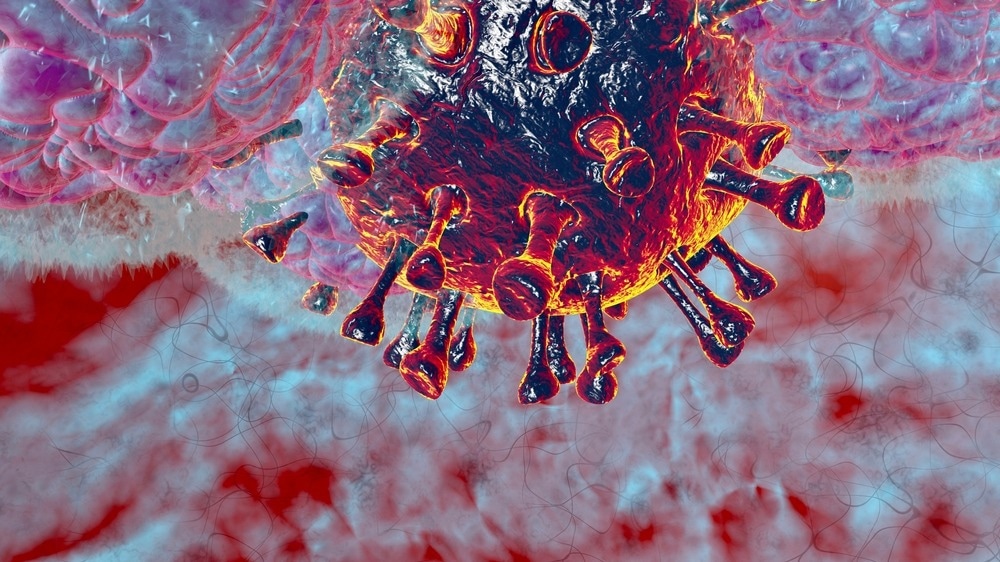Community-based studies have revealed the success of using inhaled budesonide early in treating the coronavirus disease 2019 (COVID-19) to reduce the time to clinical resolution. The Steroids in COVID-19 (STOIC) study investigated the consequences of the severe acute respiratory syndrome coronavirus 2 (SARS-CoV-2) infection under two therapeutic arms, including inhaled budesonide and usual care.
A recent study under review at the Nature Portfolio journal and currently available on the Research Square* preprint server examines the role of inflammatory mediator expression networks on clinical outcomes in individuals with high and low SARS-CoV-2 burden.

Study: Coordinated nasal mucosa-mediated immunity accelerates recovery from COVID-19. Image Credit: Numstocker / Shutterstock.com

 *Important notice: Research Square publishes preliminary scientific reports that are not peer-reviewed and, therefore, should not be regarded as conclusive, guide clinical practice/health-related behavior, or treated as established information.
*Important notice: Research Square publishes preliminary scientific reports that are not peer-reviewed and, therefore, should not be regarded as conclusive, guide clinical practice/health-related behavior, or treated as established information.
About the study
The present study explored how expression networks of inflammatory mediators contribute to clinical outcomes in STOIC participants with high and low SARS-CoV-2 burden. STOIC subjects with COVID-19 and healthy individuals were stratified into four nodes, including interferon (IFN), innate immunity-like, mucosal immunity-like, and chemokine-dominant at day 0 enrolment, which was based on the predominant inflammatory patterns.
Participants were stratified based on cycle threshold (Ct) values into viralhigh (Ct < 30) or virallow (Ct > 30). SARS-CoV-2 copy number was equal by day seven among virallow and viralhigh participants. Next, the team investigated the expression of inflammatory nodes at days 0 and 14.
Study findings
A high viral burden was associated with increased IFN node expression relative to a low viral load at day 0.
Expression of the chemokine node was elevated, regardless of SARS-CoV-2 load. However, viralhigh participants exhibited the highest chemokine node expression at day 0.
Mucosal node expression was elevated in viralhigh participants as compared to virallow participants. No differences in innate node expression were observed between groups at either point.
Additionally, high IFN node expression was noted in only virallow subjects at day 14. Hierarchical clustering could not group participants into clusters according to node expression at either point.
The researchers also examined the effect of the STOIC intervention (budesonide/standard care) on node expression and viral load. After randomized allocation, 45% of virallow and 54.4% of viralhigh participants received budesonide.
SARS-CoV-2 copy number declined over time in both intervention arms among viralhigh participants. No changes in copy number were observed in virallow participants. Budesonide treatment led to the accelerated recovery of virallow subjects.
There were no differences in innate or IFN node expression in either intervention arm among virallow subjects after day 14, whereas standard care reduced chemokine and mucosal node expression. In high viral load participants, expression of IFN, chemokine, and mucosal nodes was decreased in both intervention groups; however, the innate node expression was unchanged.
Furthermore, 36.4% of standard care and 26% of budesonide cohorts exhibited a heightened innate node expression at day 0. Budesonide recipients with high viral load had a 1.7-day faster recovery than standard care subjects. Budesonide treatment in low viral load participants similarly accelerated recovery.
High innate node expression, irrespective of treatment intervention, was associated with faster recovery after seven days and increased severity of nasal symptoms at days 0 and one. Overall, the high mucosal node expression was associated with quicker recovery, as it caused a 7.9-day faster clinical resolution in virallow subjects on usual care.
Increased mucosal node expression was typically observed in younger subjects. Elevated mucosal node expression was associated with fewer self-reported symptoms in high viral load participants after seven days. In low viral load subjects, self-reported symptoms were comparable between those with high and low mucosal node expression.
Mucosal node diverged into two daughter nodes by day 14. One of these nodes comprised a network of interleukin 2 (IL-2), granulocyte-macrophage colony-stimulating factor (GM-CSF), and C-C motif chemokine ligand 17 (CCL17). The second node included a network of CCL13, CCL26, and IL-4.
Mucosal node expression was observed across different epithelial cells in the upper airways. IL-33 was the most abundant and was predominantly expressed in nasal ciliated cells. Ciliated cells were associated with CCL17 and IL-5 expression, while CCL26 expression was abundant in Hillock cells.
Conclusions
Elevated mucosal node expression involving CC13, CCL17, CCL26, IL-2, IL-4, IL-5, IL-12, IL-33, and GM-CSF in the upper respiratory tract was associated with a 3.7-day faster recovery in STOIC participants. Notably, the study findings indicated that time to symptom onset, clinical severity, and resolution were comparable between viralhigh and virallow participants.
Taken together, elevated mucosal response expedited symptom resolution in COVID-19 patients, which was primarily observed in younger patients.

 *Important notice: Research Square publishes preliminary scientific reports that are not peer-reviewed and, therefore, should not be regarded as conclusive, guide clinical practice/health-related behavior, or treated as established information.
*Important notice: Research Square publishes preliminary scientific reports that are not peer-reviewed and, therefore, should not be regarded as conclusive, guide clinical practice/health-related behavior, or treated as established information.